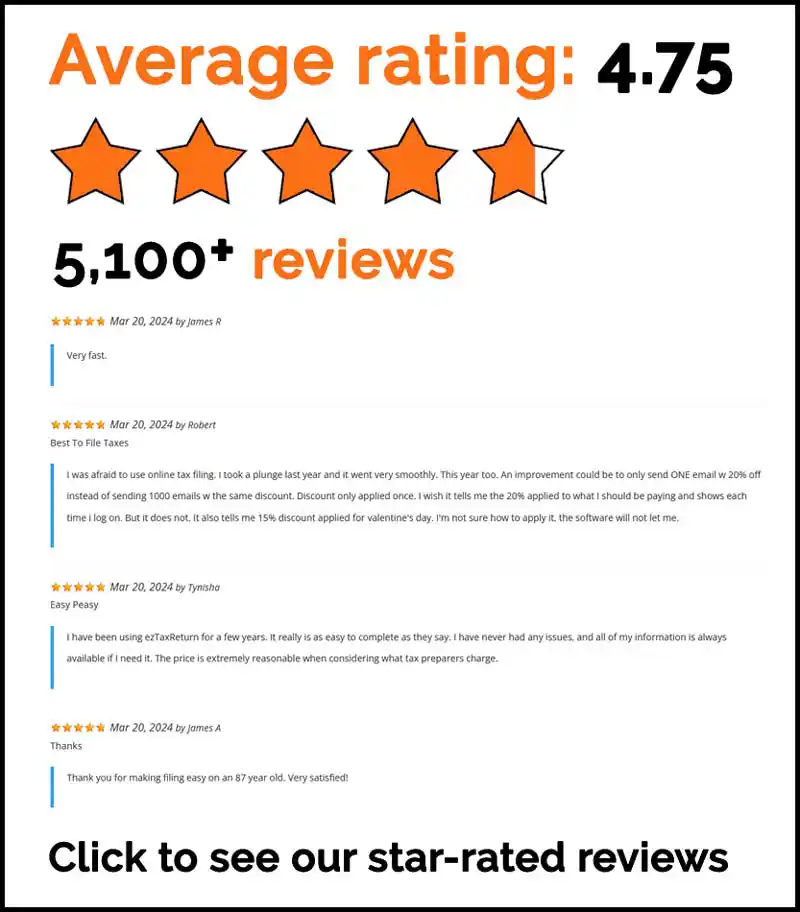Want to maximize your tax refund this year? This guide on how to get more money back on your taxes will show you actionable tips and strategies to get the most from your tax return. From optimizing your filing status to claiming all possible tax credits and deductions, we will walk you through steps to potentially increase your refund. Let’s get started!
Key Takeaways
- Choosing the right filing status can maximize your tax refund – explore options like Head of Household or Married Filing Jointly for potentially huge savings!
- Claiming tax credits like the Earned Income Tax Credit and Child Tax Credit could mean the difference between a small refund and a substantial one – don’t miss out on what you’re owed!
- Strategically using deductions, contributing to retirement accounts, and using tax preparation software help can elevate your refund game!
Optimize Your Filing Status
Your filing status is the foundation of your tax return, and choosing the right one is crucial. It impacts not only your tax liability but also your overall refund amount. Changes in your personal situation, such as getting married, having children, or purchasing a home, can significantly affect which filing status is most beneficial for you. Selecting the appropriate filing status can lead to substantial tax savings, so understanding the available options is crucial.
There are several filing statuses to consider, each with its own set of benefits and requirements. We’ll explore the advantages of filing as Head of Household, the differences between Married Filing Jointly and Separately, and the considerations for Single Filers. Understanding these options will help you make an informed decision and maximize your tax refund.
Head of Household Benefits
Filing as Head of Household can offer significant tax savings, especially for those who qualify. The standard deduction for Head of Household filers is higher than that for single filers, standing at $21,900 for 2024, compared to $14,600 for single filers. This higher deduction can lead to a substantial reduction in your taxable income and, consequently, a bigger tax refund.
To qualify for Head of Household status, you must meet certain criteria. To qualify, you must have paid over half of the household maintenance costs. Additionally, you need to have a qualifying child or dependent residing with you for more than six months each year. Meeting these requirements not only provides a higher standard deduction but also potentially lower tax rates compared to filing as a single individual.
Married Filing Jointly vs. Separately
Married couples face a critical choice that can significantly impact their tax refund: whether to file jointly or separately. Filing jointly often provides the most tax benefits, including higher income thresholds for various tax credits and deductions. Married couples filing jointly can also take advantage of potentially lower tax rates.
However, there are scenarios where filing separately might be more advantageous. If one spouse has significant medical expenses or miscellaneous deductions, filing separately can sometimes result in a lower overall tax liability.
Evaluating your specific financial situation can help determine the best approach for your household status.
Single Filers
Single filers need to be strategic to maximize their tax refund. One effective strategy is to claim all available tax credits and deductions based on your income level and expenses. For instance, while you may not qualify for certain credits aimed at families, there are still numerous opportunities to reduce your tax liability through other means. Consider focusing on credits like the Saver’s Credit for retirement contributions and deductions such as student loan interest or qualified education expenses to boost your refund.
Understanding how your income influences your eligibility for various tax credits is crucial. Thoroughly evaluating your eligibility and claiming every credit you qualify for can potentially maximize your tax refund. Remember, every dollar counts, and even small credits can add up to a bigger refund.
Utilize Tax Credits
Tax credits are one of the most effective ways to reduce your tax liability and increase your refund. Unlike deductions, which reduce your taxable income, tax credits provide a dollar-for-dollar reduction in your tax bill. This makes them incredibly valuable during tax season.
There are various tax credits available, each designed to help taxpayers save money in different ways. Some of the most common tax credits include the Earned Income Tax Credit, Child Tax Credit, and Education Credits. Exploring each of these credits will show how they can help you achieve a bigger tax refund.
Earned Income Tax Credit
The Earned Income Tax Credit (EITC) is a refundable credit that benefits low- to moderate-income workers. Despite its potential to significantly lower tax bills, many eligible taxpayers do not claim it. This oversight can result in missing out on a substantial tax refund.
Eligibility for the EITC depends on your income, filing status, and the number of qualifying children. Claiming this credit can reduce your tax liability and even result in a refund if it exceeds the amount of taxes owed. ezTaxReturn can help determine your eligibility and maximize this valuable credit.
Child Tax Credit
The Child Tax Credit provides significant tax relief for families with qualifying children under the age of 17. For each qualifying child, you can claim up to $2,000, with a portion of the credit being refundable. This means that even if your tax liability is reduced to zero, you could receive a refund for the remaining credit amount.
To qualify, the child must be a U.S. citizen and claimed as a dependent on your tax return. The Child Tax Credit is an excellent way to reduce your tax bill and increase your refund, making it a valuable tool for families during tax season.
Education Credits
Education tax credits can provide significant financial relief for students and parents. The American Opportunity Credit allows eligible students to claim up to $2,500 per year for qualified education expenses for the first four years of higher education. This credit is partially refundable, which means it can increase your refund even if you don’t owe taxes.
Another valuable credit is the Lifetime Learning Credit, which provides up to $2,000 per tax return for qualified education expenses and is not limited to the first four years of education. Utilizing these education credits can significantly lower your tax bill and make higher education more affordable.
Maximize Tax Deductions
Tax deductions are another effective way to reduce your overall tax bill. Deductions work by lowering your taxable income, which can lead to a reduced tax liability. Carefully selecting and maximizing your deductions can increase your chances of a bigger tax refund.
One of the key decisions you’ll need to make is whether to take the standard deduction or itemize your deductions. This choice depends on your specific financial situation and the total amount of deductible expenses you have. Exploring the differences between these options will provide guidance on how to choose the best one for you.
Standard vs. Itemized Deductions
The choice between standard and itemized deductions is influenced primarily by the total deductible expenses incurred during the tax year. When the standard deduction is larger than the total of your itemized deductions, it’s generally the better option. The standard deduction typically allows for a simpler filing process, especially when taxpayers have few deductible expenses.
Itemizing deductions, on the other hand, becomes the smarter choice when you have a significant amount of deductible expenses that exceed the standard deduction. These can include expenses such as mortgage interest, charitable contributions, and medical expenses.
Evaluating your expenses carefully will help determine the best approach for your tax situation. When you file your taxes with ezTaxReturn, we automatically compare your standard versus itemized deduction, so you can choose the one that gives you the biggest savings. File now!
Qualified Medical Expenses
Qualified medical expenses can provide substantial tax savings if they exceed 7.5% of your adjusted gross income. These expenses include medical and dental costs, prescription medications, and other healthcare-related expenses that are not reimbursed by insurance.
Itemizing these expenses can lower your taxable income and potentially increase your tax refund. Keeping detailed records of all medical expenses throughout the year ensures you can claim the maximum deduction available.
Charitable Contributions
Charitable contributions are a great way to support valuable causes while also benefiting from tax deductions. You can deduct contributions to qualified charities up to 60% of your adjusted gross income, depending on the type of donation. These deductions can significantly lower your taxable income and increase your refund.
Donating to qualified charities not only provides tax benefits but also allows you to make a positive impact in your community. Be sure to keep receipts and records of all donations to claim these deductions on your tax return.
Contribute to Retirement Accounts
Contributing to retirement accounts is a strategic way to lower your taxable income and increase your tax refund. By investing in retirement accounts, you can take advantage of immediate tax savings and secure your financial future. Contributions to retirement accounts such as Traditional IRAs and 401(k) plans provide valuable tax deductions that can lead to a bigger refund.
These contributions not only reduce your current tax liability but also help you build a nest egg for retirement. This dual benefit makes retirement accounts an essential part of any tax-saving strategy.
Traditional IRA Contributions
Traditional IRA contributions offer significant tax benefits by reducing your taxable income. Contributions to a traditional IRA may be partially or fully deductible, depending on your income and participation in other retirement plans. These contributions provide an above-the-line deduction, which reduces your taxable income regardless of whether you itemize your deductions.
The deadline for making IRA contributions for the tax year 2024 is April 15, 2025. Taking advantage of this deduction can reduce your tax bill and potentially increase your refund.
Employer-Sponsored Plans
Employer-sponsored retirement plans, such as 401(k)s, offer significant tax advantages. In 2024, the maximum contribution limit for a 401(k) is $23,000, with an additional catch-up contribution of $7,500 if you are 50 or older. Contributions to a traditional 401(k) are not counted in your taxable income for the year. This effectively helps to lower your tax burden.
Maxing out contributions to these plans allows you to fully benefit from the tax advantages and build a substantial retirement fund. This strategy can result in significant tax savings and a more secure financial future.
Save with Health Savings Accounts
Health Savings Accounts (HSAs) and Flexible Spending Accounts (FSAs) provide excellent tax benefits for medical expenses. HSAs provide triple tax benefits. These benefits include tax-deductible contributions, tax-free growth, and tax-free withdrawals for qualified medical expenses. This makes them a powerful tool for reducing your overall tax bill and saving money.
FSAs also allow you to set aside pre-tax money for eligible healthcare expenses. Both HSAs and FSAs can manage medical costs while providing significant tax savings.
Health Savings Account (HSA) Contributions
For 2024, individuals can contribute up to $4,150 to an HSA, while the limit for family coverage is $8,300. Additionally, individuals aged 55 and older can make an extra catch-up contribution of $1,000 to their HSAs. These tax-deductible contributions reduce your taxable income and can increase your tax refund.
The funds in an HSA grow tax-free, and withdrawals for qualified medical expenses are also tax-free. This combination of benefits makes HSAs an excellent tool for saving on taxes and managing healthcare costs.
Flexible Spending Account (FSA) Contributions
Flexible Spending Accounts (FSAs) are another tax-advantaged way to save on healthcare expenses. Setting aside pre-tax money into an FSA allows you to use these funds for eligible healthcare expenses, reducing your taxable income. This can lead to significant tax savings and a lower overall tax bill.
However, it’s important to note that FSAs generally operate under a ‘use it or lose it’ rule, meaning you must use the funds within the plan year or risk losing them. While some plans may offer a short grace period or allow a limited rollover of unused funds, planning your expenses carefully is crucial to maximize the benefits of an FSA.
Year-End Tax Planning Strategies
Effective year-end tax planning can make a significant difference in your tax bill and refund. Taking proactive steps throughout the year, especially as it draws to a close, ensures you’re maximizing available deductions and credits. Using ezTaxReturn can streamline the filing process and help avoid costly mistakes that could reduce your refund.
Two key strategies to consider are harvesting capital losses and prepaying deductible expenses. These tactics can lower your tax liability and maximize your refund, making them essential components of a comprehensive tax planning approach.
Harvest Capital Losses
Tax-loss harvesting involves selling investments at a loss to offset capital gains, reducing your overall tax liability. This strategy is particularly beneficial for individuals in higher income tax brackets. Strategically selling underperforming investments can lower your taxable income and potentially increase your tax refund.
Prepay Deductible Expenses
Prepaying certain expenses before the year ends can significantly increase the amount of itemized deductions you claim. Expenses such as property taxes and mortgage interest are examples of costs that can be prepaid to maximize your deductions. Advancing these payments can increase your itemized deductions for the current tax year and potentially boost your refund.
This strategy is particularly useful if you anticipate having higher deductible expenses in the following year. Prepaying expenses can effectively manage your tax liability and take full advantage of available deductions.
Use Tax Preparation Software
Make tax filing easier and maximize your refund with ezTaxReturn. Our software identifies potential credits and deductions, saving you time and money. With streamlined, intuitive guidance, it ensures 100% accuracy, whether your taxes are simple or complex, helping you unlock your full refund potential.
Summary
In summary, maximizing your tax refund involves a combination of strategic planning and understanding the various options available to you. By optimizing your filing status, utilizing tax credits, maximizing deductions, contributing to retirement accounts, saving with health savings accounts, employing year-end tax strategies, and using ezTaxReturn, you can significantly increase your refund and reduce your tax liability.
Remember, every dollar saved on your tax bill is a dollar that can be used to achieve your financial goals. With the right approach, you can make the most of tax season and secure a brighter financial future. Take action today and start planning for a bigger tax refund!
Frequently Asked Questions
What is the best filing status to maximize my tax refund?
To maximize your tax refund, consider filing as Head of Household if you qualify, as it often leads to greater deductions and credits! This status typically provides more tax benefits than filing as Single or Married Filing Separately.
How can I qualify for the Earned Income Tax Credit?
You can qualify for the Earned Income Tax Credit based on your income, filing status, and number of qualifying children. Use ezTaxReturn to see if you’re eligible and maximize your benefits!
What expenses qualify for itemized deductions?
You can qualify for itemized deductions with expenses like mortgage interest, charitable contributions, and medical costs! Remember, your total needs to surpass the standard deduction to make itemizing worth it!
Are contributions to a Health Savings Account tax-deductible?
Absolutely! Contributions to a Health Savings Account (HSA) are tax-deductible, which can lower your taxable income. The best part is that your money grows tax-free!
The articles and content published on this blog are provided for informational purposes only. The information presented is not intended to be, and should not be taken as, legal, financial, or professional advice. Readers are advised to seek appropriate professional guidance and conduct their own due diligence before making any decisions based on the information provided.




